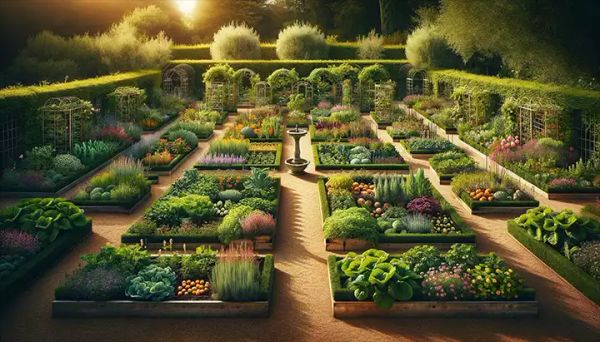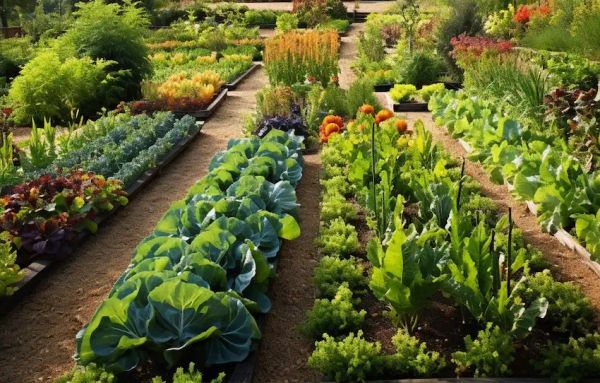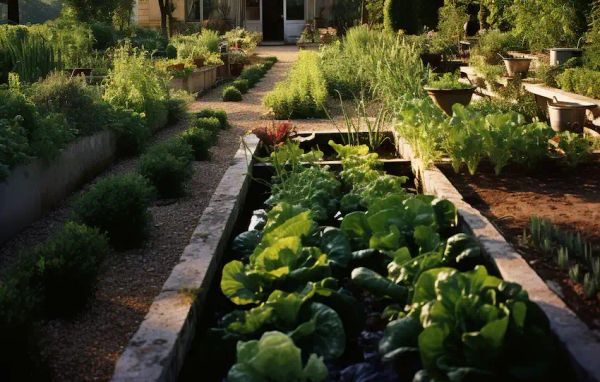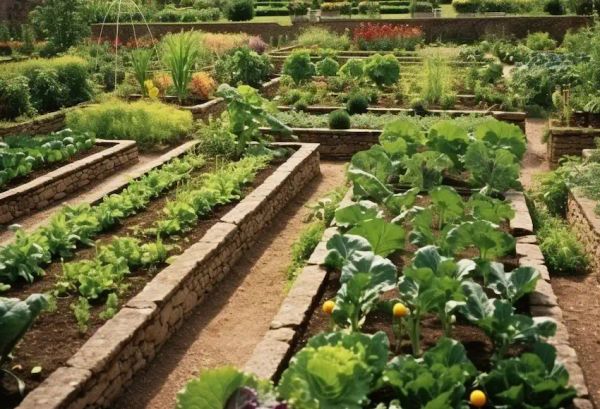A potager, also known as a French kitchen garden, is the perfect blend of aesthetics and practicality. By combining ornamental and edible plants in a harmonious space, a potager not only looks beautiful but also provides you with fresh produce. Let’s dive into a step-by-step guide on how you can create your own potager and transform your garden into a picturesque and productive retreat.

Step 1: Planning Your Potager
1.1. Choose the Perfect Spot
Start by selecting a location that receives at least six hours of sunlight daily. Having your potager close to the kitchen makes it convenient for easy access to fresh ingredients.
1.2. Design a Symmetrical Layout
Traditional potagers usually have a symmetrical layout, often in a square or rectangular shape. Divide the space into equal-sized beds with pathways in between for a visually appealing design.

1.3. Rotate Your Crops
To maintain the health of the soil and minimize pests, plan your plantings in a way that allows you to rotate crops each season.
Step 2: Preparing the Site
2.1. Clear the Area
Before you start, clear the area of any weeds, stones, or debris. This blank canvas will be ready for your potager.

2.2. Enhance the Soil
Good soil is the key to a thriving garden. Enrich it by adding compost and organic matter, giving your plants the best foundation to grow.
2.3. Add Borders and Pathways
Define your garden beds using borders made from wood, stone, or brick. Install pathways with gravel or bark mulch, allowing easy navigation between the beds.

Step 3: Selecting Plants
3.1. Create a Mix of Plants
Mix it up by combining herbs, vegetables, fruit bushes, edible flowers, and ornamental plants. Consider color, height, and seasonality when selecting to ensure a beautiful and productive garden throughout the year.
3.2. Embrace Companion Planting
Companion planting is an effective technique to promote growth, deter pests, and encourage pollination. Experiment with different plant combinations to maximize the benefits.
Step 4: Planting Your Potager
4.1. Begin with Perennials
Start by planting perennial herbs and flowers, as they will be the backbone of your garden. These plants will come back year after year, providing a stable foundation.
4.2. Add Annuals and Vegetables
After the last frost date, it’s time to plant your selected vegetables and annual herbs. Interplant them with flowers to attract pollinators and beneficial insects, creating a vibrant and dynamic ecosystem in your potager.
Step 5: Adding Structural Elements
5.1. Install Supports
For climbing plants such as beans, peas, and flowering vines, add supports like trellises, stakes, or obelisks. These structures not only provide stability but also add vertical interest to your garden.
5.2. Create Focal Points
Give your potager character and charm by incorporating elements like birdbaths, sundials, or a central fountain. These focal points will draw the eye and create a sense of tranquility in your garden.
Step 6: Maintenance
6.1. Give it Regular Care
Remember to water, weed, and prune your potager regularly. Keep an eye out for pests and diseases, addressing them promptly to maintain the health of your plants.
6.2. Harvest Frequently
To encourage continuous production, harvest ripe produce often. Enjoy the fruits (and vegetables) of your labor in your kitchen, savoring the freshness and flavors.
6.3. Make Seasonal Adjustments
As the seasons change, replace spent plants with varieties that are suitable for the new season. This way, your potager will remain productive and visually appealing all year round.
A potager is more than just a garden; it’s a living artwork that combines beauty and functionality. With careful planning, preparation, and love, your potager will become a serene space where you can immerse yourself in nature’s bounty and beauty right in your backyard. Embrace the process, and witness as your French kitchen garden comes to life, providing a feast for both the eyes and the table. Inspired by this? Share the article with your friends!




